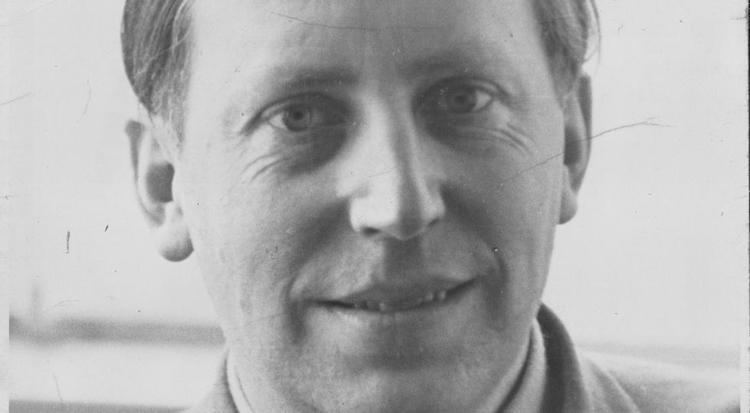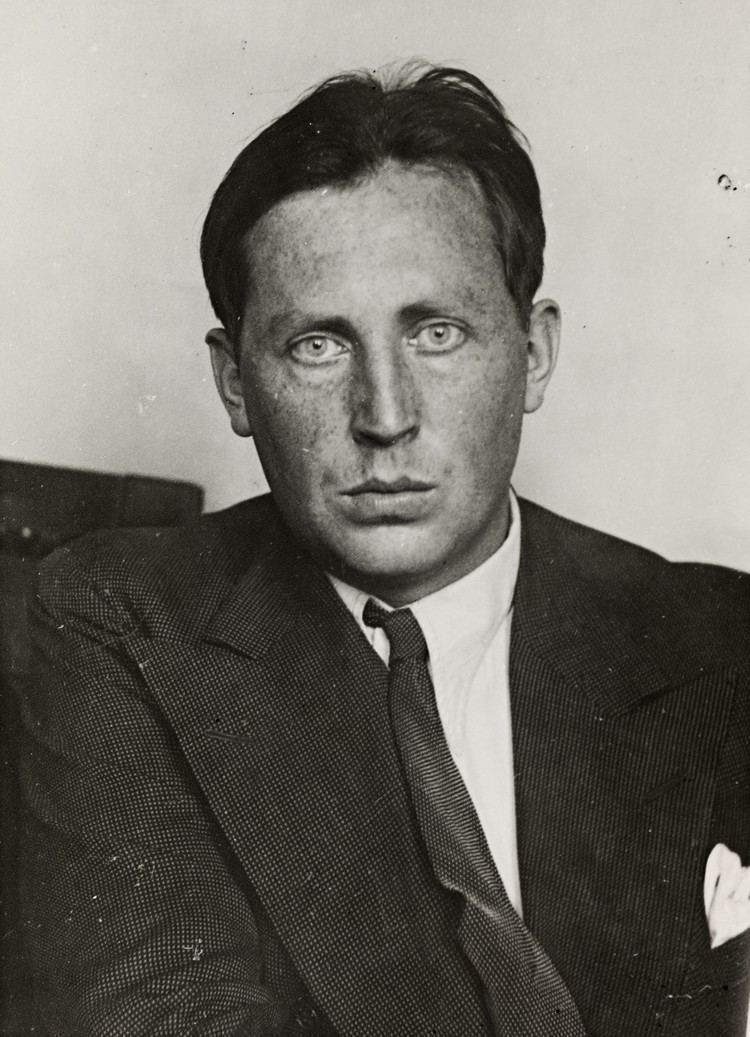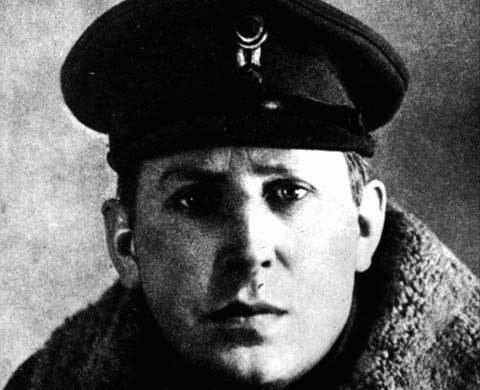Nationality Norwegian Parents Peter Lexau Grieg | Name Nordahl Grieg Siblings Harald Grieg Role Poet | |
 | ||
Born Johan Nordahl Brun Grieg1 November 1902Bergen, Norway ( 1902-11-01 ) Pen name Jonatan Jerv (early works) Books Our Honor and Our Glory, The Ship Sails On Similar People Otto Mortensen, Harald Grieg, Regis Boyer | ||
Nordahl grieg til ungdommen med tekst with english captions
Johan Nordahl Brun Grieg, known as Nordahl Grieg, (1 November 1902 – 2 December 1943) was a Norwegian poet, novelist, dramatist, journalist and political activist. He was a popular poet and a controversial public figure. He served as chair of the political organization Friends of the Soviet Union (1935–1940). He served in World War II as a war correspondent and was killed while on a bombing mission to Berlin.
Contents
- Nordahl grieg til ungdommen med tekst with english captions
- Rob sinclair s translation of the poem til ungdommen by nordahl grieg
- Early life
- Poet and journalist
- Communist
- World War II
- War correspondent
- Final mission
- Legacy
- Selected works
- References

Rob sinclair s translation of the poem til ungdommen by nordahl grieg
Early life

Johan Nordahl Brun Grieg was born in Bergen, Norway, the son of lector Peter Grieg and Helga née Vollan. Grieg was married to actress Gerd Egede-Nissen. He was distantly related to composer Edvard Grieg, and brother of Norwegian publisher Harald Grieg.

He studied at King Frederick's University (now the University of Oslo) and spent time travelling abroad, sometimes as a tourist and sometimes as a sailor.

Receiving the 1924 Norway Scholarship, Grieg spent a year at Wadham College, Oxford in England, studying history and literature. At least one of Grieg's poems, "Kapellet i Wadham College" ("The Chapel in Wadham College"), was inspired by his stay there, where he was a contemporary of Cecil Day-Lewis, and where he befriended G.K. Laycock.
Poet and journalist
Grieg debuted in 1922 with his first book of poetry Omkring Kap det gode Haab (Around the Cape of Good Hope), based on his seagoing experiences - as was Skibet gaar videre (The Ship Sails On) in 1924. The latter book aroused controversy for its exposure of sailors' harsh living and working conditions.
Grieg spent 1927 as a newspaper correspondent in China, where he witnessed firsthand the civil war between the Kuomintang and the Communists. The same year Grieg's plays En ung manns Kjaerlighet (A Young Man's Love) and Barabbas were produced. The latter was a modern revolutionary interpretation of New Testament character Barabas. The 1929 poetry collection Norge i våre hjerter (Norway in Our Heart) expressed deep love for his country and his people in their poverty and misery and attracted critical acclaim.
Communist
Compassion for the poor and exploited led Grieg to join the Norwegian Communist Party. From 1933 to 1935, he lived in the Soviet Union, where he was officially invited to study the techniques of Soviet stage and film. On returning to Norway, he became an ardent supporter of Joseph Stalin's policies, and became the chairman of the Friends of the Soviet Union in the same year. In 1937, he famously wrote a defence of the Moscow Trials, attacking Norwegian authors who had criticized them. His novel Ung må verden ennu være (Young must the World yet be) was also a defence of Stalin and the Moscow Trials. In many articles, he criticized the supporters of Leon Trotsky, who lived in Norway from 1937-39.
His 1935 play Vår ære og vår makt (Our Honor and Our Glory) depicted the lives of Norwegian sailors during World War I (Norway remained neutral and traded with both sides). The work was an attack on the shipping industry's exploitation of seafarers. From 1936 to 1937, Grieg published the magazine Veien Frem, which initially succeeded in attracting prominent writers, but as the magazine adopted an increasingly Stalinist position relating to the Moscow Trials, most of them severed ties with it and it ceased publication.
His 1937 dramatic play Nederlaget (The Defeat) was about the Paris Commune. The Spanish Civil War was the subject of Spansk sommer (Spanish Summer) (1937) and partly also of Ung må verden ennu være, whose plot shifts between Spain and the Soviet Union. The wars also inspired the 1936 poem Til ungdommen (For the Youth), one of his most well-known works, which was set to music in 1952 by Danish composer Otto Mortensen and was performed on numerous occasions (see Til ungdommen).
World War II
The outbreak of World War II, and especially the German invasion and occupation of Norway, led Grieg to oppose Stalin's policies. In 1939, the Soviet Union signed the Molotov–Ribbentrop Pact with Nazi Germany and, until the 1941 Nazi invasion, instructed Communists worldwide to regard the ongoing war as an "Imperialist" war in which they should not take part. Grieg was a staunch anti-Nazi and Norwegian patriot and committed himself in 1940 to the struggle against the Nazi occupation. In the winter of 1939-40, Grieg served in the Norwegian Army in Finnmark on neutrality guard during the Russo-Finnish Winter War. In 1940, after serving during the Norwegian Campaign against the Germans, he escaped to the United Kingdom aboard the same vessel that carried the Norwegian Royal family and the National Gold reserves.
War correspondent
Once in Britain, Grieg served the Norwegian government in exile, and participated in making patriotic radio programs. He was commissioned in the Norwegian Armed Forces and served as a war correspondent. His work involved visiting and reporting on Norwegian units around Britain. He met Norwegian servicemen on duty in Iceland and other remote outposts. In the summer of 1942 Grieg spent several weeks on the Norwegian island of Jan Mayen in the Atlantic Ocean, writing the poem Øya i Ishavet (The Island in the Ice Sea). Like other war correspondents he joined operational missions over occupied Europe. In the course of one of these he lost his life, carrying the rank of captain.
Final mission
On the night of 2–3 December 1943, Grieg was one of several observers for an Allied air raid on Berlin. He was attached to 460 Squadron, Royal Australian Air Force (RAAF), which was based at RAF Binbrook. Grieg joined the crew of a Lancaster Mk.III (serial number LM316, squadron code "AR-H2") captained by Flying Officer A. R. Mitchell, RAAF. Berlin was Germany's capital city and was well-defended. It lay in the east of the country, requiring crews to test the limits of their fuel supply and of their own endurance.
The long journey took them over the ranges of many night fighters. 460 Sqn lost five aircraft that night—one of them was LM316. 37 airmen had been on board these aircraft, but only eight survived. They spent the rest of the war in a POW camp. None of the eight survivors came from LM316. In addition to Grieg, the seven crew members (four Australians and three Britons) were killed in the crash. Grieg was neither the only correspondent shot down that night, nor the only Norwegian.
Legacy
Grieg became a hero in Norway because of his resistance to the Nazi Occupation. Grieg is still popular in Norway, especially his anti-fascist poetry. The pre-war controversies in which he was involved were overshadowed by his war record.
In 1945, a collection of his war poems, Friheten (Freedom) was published and remained a best-selling Norwegian poetry collection. In 1957, a statue Grieg by Roar Bjorg was unveiled at Den Nationale Scene in Bergen. In 1990, the musical Nordahl Grieg i våre hjerter (Nordahl Grieg In Our Hearts), written by Erling Gjelsvik with music by Knut Skodvin debuted in Bergen.
In November 2003, a memorial stone was unveiled at the site (52°23′51″N 13°12′58″E) where Nordahl Grieg died in Kleinmachnow. In 2010, Nordahl Grieg videregående skole (Nordahl Grieg High School) in Rådal was opened in the Rådal neighborhood of Bergen.
Grieg was a friend of English novelist Graham Greene, who wrote about various aspects of Grieg's life and wartime career in his 1980 biographical work Ways of Escape. The two met when Grieg turned up unannounced at Greene's cottage in Chipping Campden, in 1931.
Grieg's burial place went unrecorded after the crash. In the early 2000s, the grave was believed to be located under a highway between Potsdam and Berlin. A new theory emerged in 2013, when journalist Asbjørn Svarstad stated that he believed that Grieg had been first buried in Berlin in 1944, and then exhumed and reburied at the Berlin Commonwealth War Graves Commission Cemetery at Heerstraße in 1949. In response to the new information, the leader of the Norwegian Socialist Left Party, Audun Lysbakken, declared that Grieg should be exhumed and reburied in Bergen, Norway.
